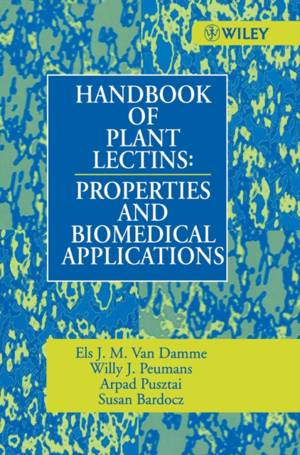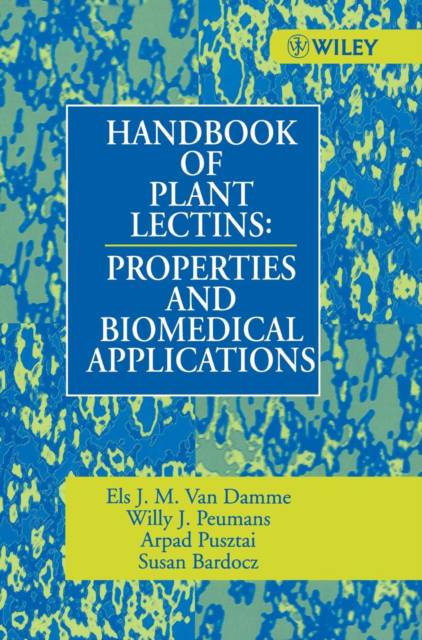
Je cadeautjes zeker op tijd in huis hebben voor de feestdagen? Kom langs in onze winkels en vind het perfecte geschenk!
- Afhalen na 1 uur in een winkel met voorraad
- Gratis thuislevering in België vanaf € 30
- Ruim aanbod met 7 miljoen producten
Je cadeautjes zeker op tijd in huis hebben voor de feestdagen? Kom langs in onze winkels en vind het perfecte geschenk!
- Afhalen na 1 uur in een winkel met voorraad
- Gratis thuislevering in België vanaf € 30
- Ruim aanbod met 7 miljoen producten
Zoeken
Handbook of Plant Lectins
Properties and Biomedical Applications
Els J M Van Damme, Willy J Peumans, Arpad Pusztai, Susan Bardocz
Hardcover | Engels
€ 672,95
+ 1345 punten
Omschrijving
Plant lectins are extensively used as tools and as bioactiveproteins in different areas of biomedical and biological research.The Handbook of Plant Lectins provides a comprehensive yet conciseoverview of the biochemical properties, carbohydrate-bindingspecificity, biological activities and applications of most of thecurrently known plant lectins. This handbook consists of two majorsections: an introductory guide and a quick reference dictionary.Part I acquaints the newcomer to the lectin field with theessential information on lectins and their importance tobiomedicine:
* what are lectins?
* their carbohydrate-binding specificity
* effects on nutrition and immunology
* use in histochemistry
* application as therapeutic agents
Part II lists approximately 200 lectin entries in alphabeticalorder. Each entry deals with the lectin(s) of a particular plantand provides, (where known), details of:
* isolation and characterisation;
* sugar binding specificity;
* biological activities;
* applications;
* commercial availability; and,
* a bibliography.
Useful summary tables list lectins according to their specificity, thereby allowing the user to choose the best lectin for theirapplication. A list of suppliers is also provided. Handbook ofPlant Lectins will be of interest to biologists and biomedicalresearchers studying cell biology, cancer research, nutrition, immunology, pathology and physiology.
* what are lectins?
* their carbohydrate-binding specificity
* effects on nutrition and immunology
* use in histochemistry
* application as therapeutic agents
Part II lists approximately 200 lectin entries in alphabeticalorder. Each entry deals with the lectin(s) of a particular plantand provides, (where known), details of:
* isolation and characterisation;
* sugar binding specificity;
* biological activities;
* applications;
* commercial availability; and,
* a bibliography.
Useful summary tables list lectins according to their specificity, thereby allowing the user to choose the best lectin for theirapplication. A list of suppliers is also provided. Handbook ofPlant Lectins will be of interest to biologists and biomedicalresearchers studying cell biology, cancer research, nutrition, immunology, pathology and physiology.
Specificaties
Betrokkenen
- Auteur(s):
- Uitgeverij:
Inhoud
- Aantal bladzijden:
- 472
- Taal:
- Engels
Eigenschappen
- Productcode (EAN):
- 9780471964452
- Verschijningsdatum:
- 6/03/1998
- Uitvoering:
- Hardcover
- Formaat:
- Genaaid
- Afmetingen:
- 163 mm x 240 mm
- Gewicht:
- 780 g

Alleen bij Standaard Boekhandel
+ 1345 punten op je klantenkaart van Standaard Boekhandel
Beoordelingen
We publiceren alleen reviews die voldoen aan de voorwaarden voor reviews. Bekijk onze voorwaarden voor reviews.









